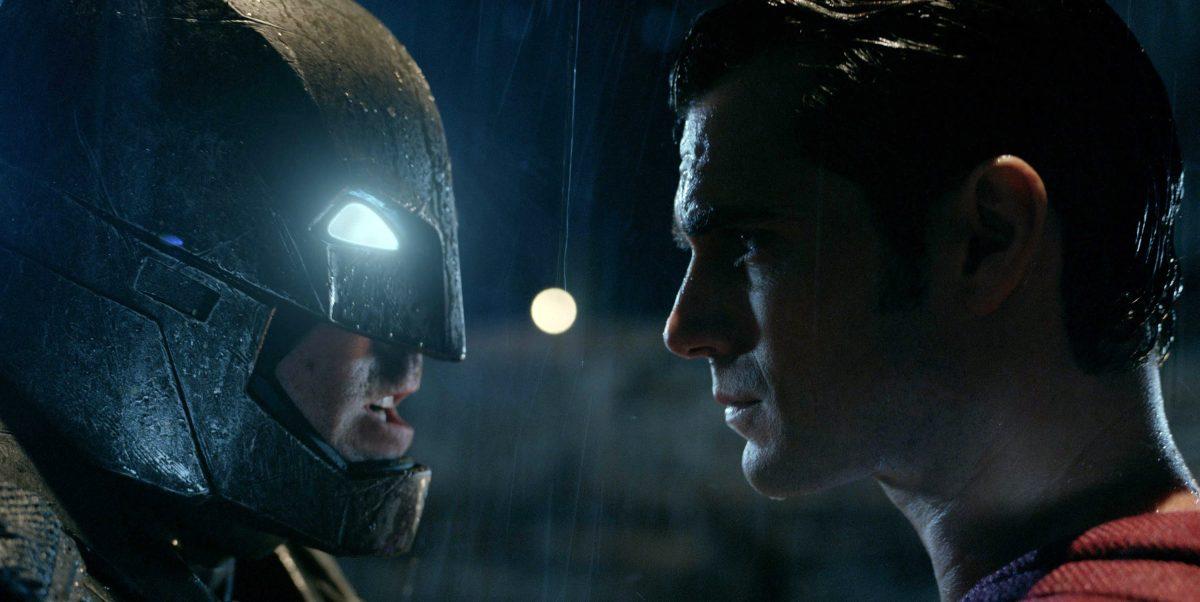“Batman v Superman: Dawn of Justice” was always going to be a divisive movie, whether it came down to how contrived the pitting together of the heroes was, the ridiculous title, the vast number of elements the filmmakers wanted to cram into one movie or the casting of Batfleck.
I will say this: If you don’t like Zack Snyder’s style of direction, then you will not like this movie. If you don’t like the less traditional idea of Superman and Batman killing baddies more wantonly, then you will not like this movie. If you cannot stand plot holes, then you will not like this movie. If you don’t like Lex Luthor acting less like Lex Luthor and more like Jesse Eisenberg, you will not like this movie. If you don’t believe that a relentless, atmospheric darkness belongs in a superhero movie, you will not like this movie.
But I liked the movie, OK? And a lot of people are going into it with a wrong idea of what a superhero movie should be — namely, that a superhero movie has to be anything in particular.
At this point in the superhero game, Marvel has set a certain standard, which often amounts to this: Superhero movies should be fun and self-aware — often in spades. We see this in most (if not every) Marvel movie, with the various translations of X-Men storylines, with the many permutations of Spider-man. So where does a superhero movie fall that is neither very fun nor self-conscious? BvS:DoJ is self-serious, and often histrionic in its tragedy. But with all of its melodrama, it is earnest. And that’s something that is lacking in the genre today.
To this extent, Snyder pulls a lot of influence from anime in his direction; looking back at “Man of Steel,” he brought to live action several specific action scenes from “Birdy the Mighty: Decode.” This isn’t unusual for directors: Darren Aronofsky was nominated for Best Picture and Best Director for “Black Swan,” which was essentially a straightforward adaptation of the anime film, “Perfect Blue.” As well, the critically acclaimed “Steven Universe” makes myriad allusions to Japanese counterparts, including “Neon Genesis Evangelion” and “Revolutionary Girl Utena.” So, in the wake of all these successes, why is Snyder’s vision of an anime-inspired superhero franchise rubbing people the wrong way?
To some end, American audiences have more difficulty digesting the moral bleakness that is consistent throughout the movie — though, truth be told, the darkness doesn’t come close to what has been explored in the comics or even in the “Justice League” animated series. One criticism that has been made is that Batman and Superman are essentially the same here, and that makes for a boring, needlessly complicated movie. However, Snyder goes to lengths to base their respective actions on character rather than plot developments, and while this could have been expressed more clearly, the development is there.
BvS is quite messy. The first half is very disjointed and can be difficult to follow. The plotting can be, dare I say, plodding, though it does an adequate job of providing the heroes motivation to fight.
So why did I like this movie?
Nathanael Hood of The Young Folks says it well: “Truthfully, despite all my grievances, I rather liked BvS. Unlike nearly all of the Marvel movies, it feels like the work of an actual filmmaker instead of a glorified television production.” This isn’t a shot at Marvel; Joss Whedon’s precedent of treating the franchise as a long-running series rather than as a number of installments has served the universe well. However, BvS is more cinematic in character beats, editing and direction.
And Snyder’s direction is certainly flawed, but I would prefer a director try to carve out a style for a movie rather than not attempt it at all. His environment is customarily over-saturated and dramatic, and here this holds true. If you’ve seen “Watchmen,” you’ll know for the most part how Snyder has composed the scenes in BvS. His action sequences are constructed of long, very choreographed shots, and this is somewhat original in the age of excessive cutting and lazy camerawork.
Is this filmmaking remarkably sophisticated? No. But, to see a genre movie taking itself seriously? It’s really refreshing.
Additionally, with BvS, DC is already marking itself as a promoter of diversity. The second movie in the cinematic universe includes a woman superhero (Wonder Woman, the absolute highlight of the movie), a woman as a love interest older than her partner (Amy Adams as Lois Lane), Laurence Fishburne as Perry White, Tao Okamoto as Luthor’s assistant, Ray Fisher in a Cyborg cameo and Holly Hunter and Diane Lane, two middle-aged women, in important roles.
“Batman v Superman: Dawn of Justice” is not a great movie. But it’s fine, and it serves its purpose. It’s more entertaining than sitting through yet another origin story.








